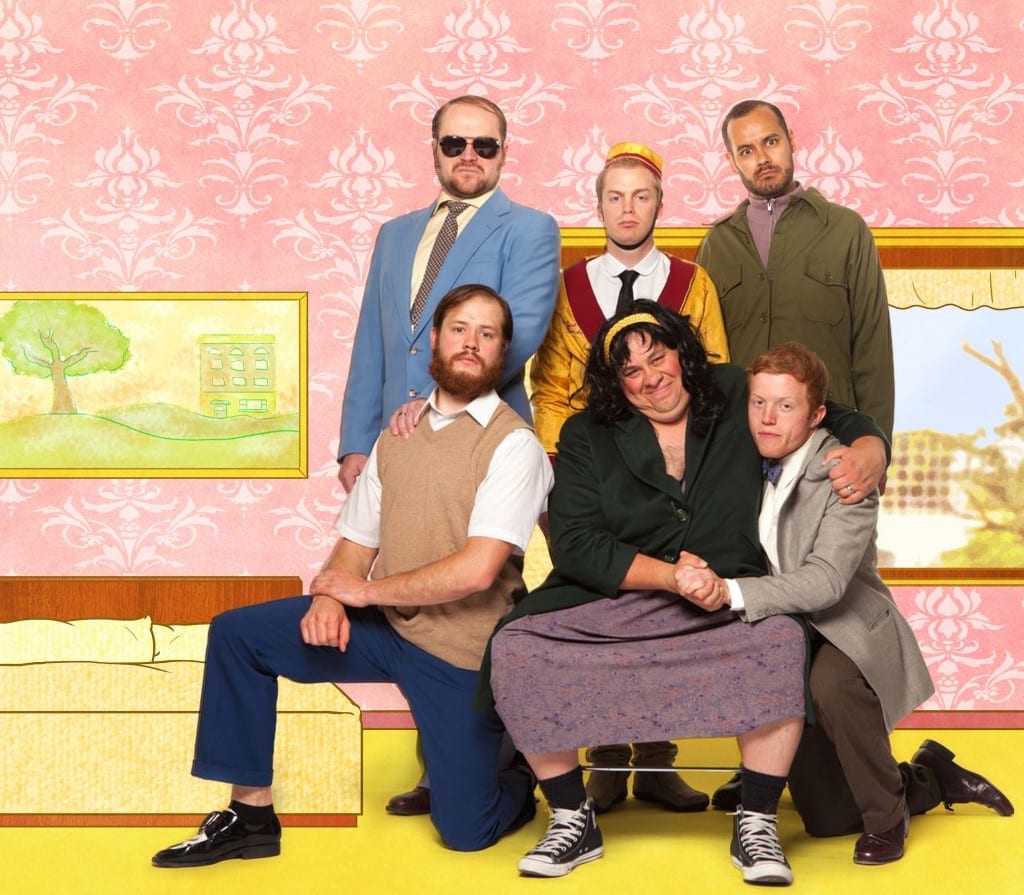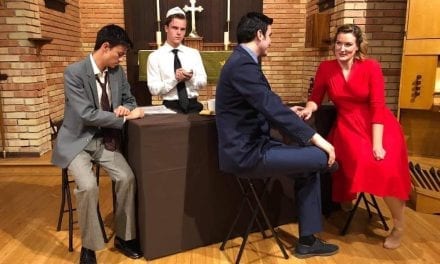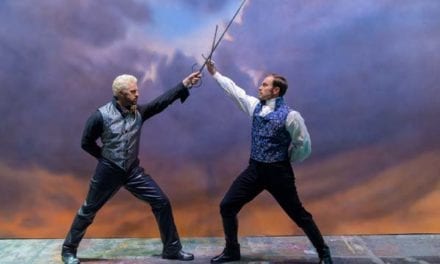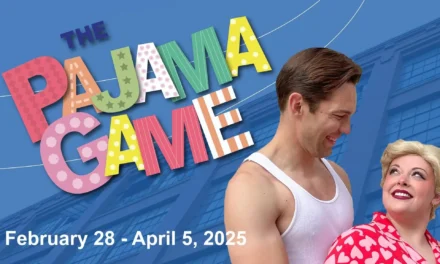MURRAY — Just a bit of silliness, really. That’s what the farcical play, What the Bellhop Saw (written by Billy Van Zandt and Jane Milmore), has to offer. Nothing too outrageous or substantial, but definitely a pleasant diversion for an evening out.
The titular character is a bellhop named Wally (Jack Kyle Oram), who arranges for his brother Georgie (James McKinney), to secretly stay in a room in his hotel for an assignation with his secretary, Heather (Maddy Belle Forsyth). Unbeknownst to them, however, the room has already been reserved for the famous author Roger Fish (Jason Sullivan), who has penned a novel that has incited the wrath of religious extremists, forcing him into hiding with his CIA bodyguard Stan (Benjamin James Henderson). Georgie is also being pursued by his wife Arlene (Jake Ben Suazo), and Wally’s girlfriend Missy (Bethany R. Woodruff), who mistakes Georgie for the infamous Mr. Fish. Mr. Fish, in turn, is being pursued by a terrorist named Babu (Robbie X. Pierce). Needless to say, hilarity ensues.
As the eponymous bellhop, Oram, was a capable comedian. His character acted as the discomfited glue that held the story together and kept the play moving. At points throughout the play, he would dash in and out of the room, making up excuses and offering everyone suggestions on how they could get out of the messes they created. One aspect of Oram’s performance I liked in particular was his skill as a physical comedian. He bounded back and forth on the stage with ceaseless energy, sometimes clambering on top of furniture or other people in his attempts to escape the situation.
As the adulterous accountant, McKinney was also quite enjoyable to watch. His frustration, agitation, and growing panic were fully expressed in his vehemently engaged physicality and clarion register of his voice. I felt very involved in his plight, particularly in the moment when his Wagnerian wife discovers him in the hotel room. Georgie’s wife, played by Suazo, provided a perfect physical foil for McKinney, and was also a delightful, thundering presence in the play.

Left to right: Bethany R. Woodruff (Missy), James McKinney (Georgie), Jake Ben Suazo (Arlene), and Maddy Belle Forsyth (Heather).
Another performance I particularly enjoyed was that of Henderson as the somewhat bumbling CIA agent. For me this was probably the freshest take on a farce stock character, and this was partially due to the wonderfully odd blocking choices made by director Chase Ramsey and executed perfectly by Henderson. These choices included having Henderson roll around on the floor in a Mission Impossible style, the constant misuse (dropping) of his firearm, and some unorthodox methods of protection, which involved the agent joining the author in the shower.
Another performance of note was M. Chase Grant as the perturbed neighbor of the featured room, who popped in regularly to complain about the noise in various states of undress, as he is trying to get amorous with his wife in the other room. I found his appearances provided some welcome breaks in the show. As is the case in farce, his predicament becomes increasingly acute until the character’s outrage reaches hilarious proportions.
Ramsey seems to have a pretty good handle on farce, which is a difficult genre to direct in the best of circumstances. One handicap I saw him and his actors facing, however, was a problem with the space itself. The old Murray Theater is quite large and cathedral-like, and it caused the actors’ voices to echo incessantly. I noticed that they were forced to make concessions in the pacing of the dialogue in order to be understood. I could almost sense their frustration as they carried on valiantly despite this obstacle. Ramsey, however, blocked the play in such a way that the pace remained largely intact even without the advantage of rapid fire dialogue. Actors were all over the stage, sometimes in very imaginative and inventive maneuvers, and it was one aspect of the show that really stood out to me. I must applaud Ramsey for his utilization of his actors’ physicality.
One technical aspect I took note of was costume design by Allen Stout. Stout managed to dress his actors in a way that was cohesive as well as comedically functional. There is a lot of dressing, undressing, cross-dressing, and characters in disguise as the play goes on, and I was impressed with how smoothly all of that went.
There are some truly enjoyable moments in this show, in particular a rendition of “Yankee Doodle Went to Town” as sung by basically everyone trying to hide their identities, as well as a “Recap” segment at the beginning of the second act to recount all of the occurrences of the first. It reminded me of something from a Tom Stoppard play, and was quite funny.
Though What the Bellhop Saw itself isn’t largely memorable to me, I enjoyed watching these actors play with each other to create something fun and frivolous.







